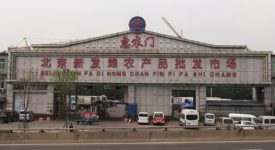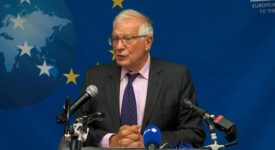The European Union that has a long tradition of cooperation in the area of development has at least since the Treaty of Rome established a special treatment and assistance programs to aid the former colonies of the first six Member States that created the European Economic Community in 1957. Promoting international cooperation has also been one of the objectives of the Common Foreign and Security Policy of the EU Treaty that contains even a section highlighting the importance given to the definition of a specific development cooperation policy and its place in the field of EU foreign affairs.
To that end, the EC Treaty allows the Community to conclude Association Agreements with States or International Organizations (Art. 310). The kind of agreements that are designed to foster cooperation in the field of development are those creating special links with developing countries in order to execute the objectives established in the Treaty: namely, the promotion of social and sustainable development, the fight against poverty, and integration into the world economy. Those objectives could be executed with the same instrument, but with two different concerns: One is the focus in the EC external relations on cooperation for development goals, applied to third countries; another one deals the development policy established for a defined group of countries – namely Africa, Caribbean, and the Pacific (ACP).
These agreements are the method by which the EU uses foreign policy to become an international actor. Similar agreements have been in use since the beginning of the European Economic Community (EEC) in 1957 to promote cooperation and assistance with the former colonies of the member states. In the context of the fast changing dynamics in international relations, these agreements evolved into a more sophisticated form, which includes, since 1992, three pillars of action: Political Dialogue, Cooperation for Development, and Free Trade, while these are addressed at other geographical areas, including Latin America and Asia. Initially, the main goal of these agreements was to strengthen the economic and trade relations with countries in Africa, the Caribbean and Pacific regions through the creation of special regimes to improve access to the European market and at the same time to improve living conditions in these developing countries while sharing development strategies.
However, a quick check of the EU negotiation process in Latin America shows that the reality in this region is quite different. There are just two cases of Association Agreements signed with countries in this region – Mexico and Chile. Three others were started at different times (between 1995 and 2007), namely, the integration processes with Mercosur, the Andean Community, and the Central American Integration System. Nevertheless, these either stopped or remain in process, faced with a wide variety of problems. By contrast, with the ACP countries, the negotiations have had a different scope with respect to the application of cooperation for development policy, which is characterized by special treatment and trade preferences.
For the past ten years, relations between the EU and Latin American countries (LAC) have been described as a strategic partnership and this is why they also employed diplomatic instruments commensurate to this top-tier status. Most important of these, launched in 1999, is the EU-LAC Summit, where the heads of state of the two regions meet to define the scope and priorities of the transatlantic relations. This structure opened the door to develop relations following the three-pillar Association Agreements model: political dialogue, cooperation for development, and trade. As there were three of these Agreements in negotiation at that time – with Mexico, Chile and Mercosur, the other regional blocks – the Andean Community and Central American Integration System – demanded an upgrade of the instruments that govern relations with the EU. But those global legal structures were not enough to define the strategic partnership that both EU and LAC blocks were seeking. In this case, a more comprehensive and specific framework would be necessary to define common priorities, objectives and actions.
In the case of Latin America, the Association Agreements are deployed as a real instrument of external relations, structured to manage the relationship between partners while stipulating mutual obligations for each party. These agreements that are regional in their focus, are complemented by the Council and European Parliament regulations, and adopted based on a proposal from the Commission. Regional Strategic Papers have their bases on the Latin American geographical regulation, as part of the instruments that the Community has developed to execute the cooperation for development policy. The Regional Strategic Papers establish the lines of action for the cooperation, the institutional actors involved in its application and the Community budget that will be applied for this purpose. In the case of Latin America, those are the result of decisions taken in the frame of bi-regional summits, as the most important stage of the external relations policy-making between both regions.
Since the Vienna Summit in 2006, the regional strategy has had a validation with different stakeholders that participate in the definition of the cooperation proposed by the Community in the frame of the new Development Cooperation Instrument. During this period of development of strategic partnership between LAC and EU the focus on the cooperation strategies has been improved. However, what is still lacking is a link between the Association Agreements and the Regional Strategic Paper. In the case of the relations with different Latin American partners, these are not considered as a legal base to support the different initiatives, due to the changing dynamic of the respective negotiations. The de-concentration process implemented by the European Commission will be very helpful to empower the delegations in third countries to manage the different stages of the EU cooperation policy, all with the participation of the EuropeAid agency and the coordination of the European External Action Service (EEAS).
All in all, the changes implemented in this new period 2007-2013 in the cooperation for EU development policy with respect to Latin America have been a step in the right direction and therefore are welcome. Available statistical data on EU aid show that trade flows are the most important source of financial resources for the region and that cooperation aid is a marginal component focused in some countries, which indicates that Latin America is not a priority region for EU aid. The objective now should be oriented towards creating a stronger link between the Association Agreements, as policy-making instruments to structure the EU’s external relations to Latin America, with the Union’s executive regulations implemented through Regional Strategic Papers. Ultimately, there are many reasons to believe that linking political dialogue and trade policies with cooperation for development components will increase the EU visibility and foster its long-sought-after role as a significant international actor in Latin America.







